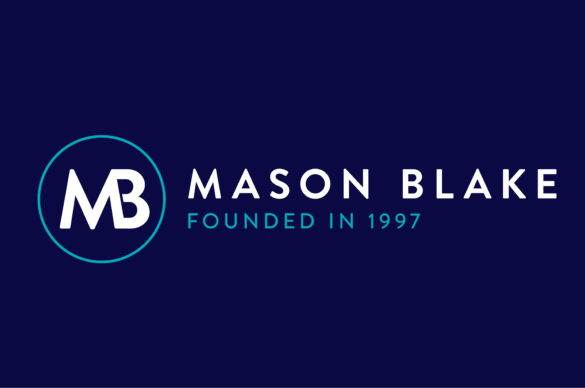dusted / 20 July
What to do about the gender pay gap

This year, all UK employers with 250 or more staff were required to publish details of their pay difference between men and women. This included both salary and bonuses. Sadly, the data doesn’t look good for asset management or the finance sector in general. The gender pay gap across the UK’s asset management industry is 27%. Compare that to an 18% gap nationally, and it’s clear that there is a real problem in this sector in relation to equal pay. So what can companies do about this?
Spread awareness
First thing’s first, everyone needs to get on the same page – the gender pay gap is real. A study by LinkedIn and CNBC revealed that, in the finance sector, 74% of men believe women are promoted at an equal rate to them in their company (as opposed to 47% of women), with 75% believing women at the same level are paid equally to men. This doesn’t correspond with the pay gap data and the fact that it is such a popular opinion means men are more likely to be resistant to any measures taken to even the playing field.
Make sure you explain the situation clearly to everyone, with evidence, and offer a means by which employees can address their issues directly to management. Those lines of communication are important because there is usually a divide between the decision-making perspective and the opinion of those who are not decision-makers. The LinkedIn study also revealed that 32% of people in senior roles believe discrimination is receding, while only 23% of non-decision makers believe the same. Since it is the non-decision makers who are most impacted by discrimination, this difference means there is a clear lack of communication between senior and lower-level staff.
Analyse data to identify problem areas
Identifying the source of the problem in your company is an important step to take. Many employers will be tempted to simply instigate diversity training courses, but, while these are a good idea and raise awareness, there is little to suggest that they have any impact on anyone’s behaviour.
By complying with the government requirement to calculate and publish pay gap information, your company will have produced a lot of data. Analyse that data to learn where you can make the biggest improvement. What level of seniority has the most conspicuous pay gap? What are your recruitment statistics telling you – how many women did you hire in the last year compared to men? Are women being given equal consideration for promotions?
When you have thoroughly studied your data, you should have a better idea of where you need to focus your efforts.
Assess your recruitment procedure
Are you recruiting a diverse mix of candidates? If not, why not? Is your company using gender-neutral language? It doesn’t take much to turn from neutral into masculine language, and this can be off-putting or unwelcoming to women. Perhaps your recruitment channels could use some rethinking? If you post job vacancies to a particular jobs board, perhaps you should think about varying where you post them to ensure people from all groups can apply.
When it comes to compensation, it’s true that women are less likely to negotiate their salary than men. This is due to the stigma associated with women asking for more – it is associated with aggressiveness for women whereas for men it’s associated with strength. With more men asking for increased salaries than women, the pay gap is likely to increase. To address this, you might rethink stating that the salary is ‘negotiable’ in your job adverts.
Encourage flexible working
Flexible working is more important for women than it is for men, but employers are rarely keen to offer flexibility. Ideally, every job you post should offer flexible hours, or at least have some creativity about how work is organised. Flexible working could mean working from home, flexitime, compressed hours, job-sharing, or part- or term-time working. Senior staff can encourage their employees into flexible working by working flexibly themselves. Some employees may feel awkward or uncomfortable requesting flexible hours; show them that it’s normal operating procedure.
Unless there is a good business reason not to, the job should be advertised as flexible from day one. Keep in mind that this doesn’t just apply to women. 91% of women want flexible working, but so do 84% of men.
Promotions and rewards
One of the biggest obstacles to closing the pay gap is the fact that such a high proportion of business executives are men. When more women are in senior positions, decision making will finally become a more gender-neutral process, which will create more opportunities for women. 30% of finance professionals believe that the biggest obstacle preventing women from advancing is unsupportive or bias corporate culture, and the corporate culture starts from the top down.
Additionally, you should review your payment data. Is there a significant gap in pay or bonuses? If so, you should consider improving your pay and reward structure. Ensure you have a clear justification for any payment and reward by regularly evaluating an employee’s performance. As we mentioned earlier, men tend to feel more confident in asking for a higher salary, which will also have an impact on the pay gap. Set rules that state that negotiated pay is contained within paygrades to make sure the difference is not too high.
You should also think about how rewards and bonuses are given out. Do managers have discretion over pay and reward? Individual discretion can, sadly, lead to bias. Implement annual equal pay audits to check gender bias is not a problem in your company. If you haven’t already, ensure managers justify all their pay and bonus decisions to HR so it’s easy to keep track.
There is no quick fix to the gender pay gap that won’t cause company-wide disruption. The action businesses need to take isn’t just about changing salaries, it’s about changing company culture. As much as many don’t wish to accept it, there is a career disadvantage to being a woman, especially in the finance sector. Being a company that has a significant gender pay gap is bad for the company image and bad for employee motivation. If you’re serious about improving the company culture, then it’s time to take action.
On the plus side, there is hope for the future. Both men and women agree that finance will have more equal representation in ten years, with only 20% of men and 21% of women disagreeing with that statement. If you need any advice or expertise on your recruitment process, please feel free to get in touch via our contact page and we’ll be happy to help.

